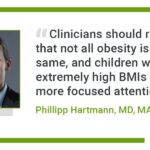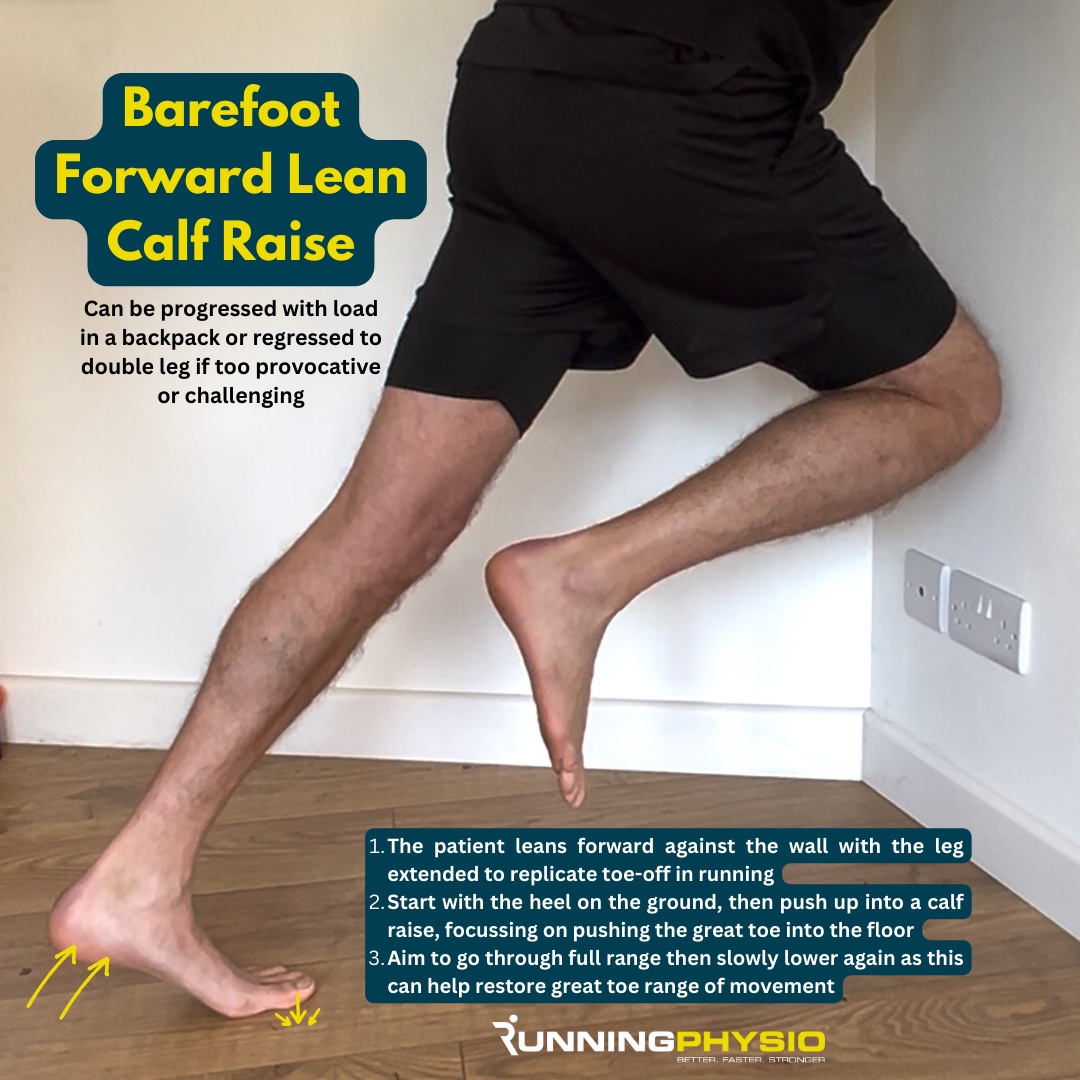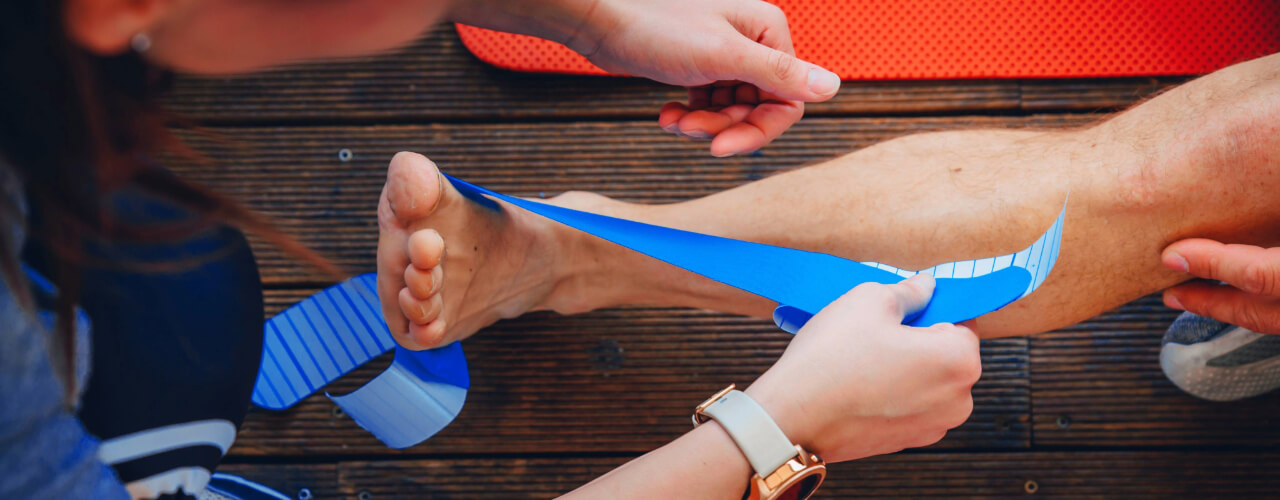Our articles are not designed to replace medical advice. If you have an injury we recommend seeing a qualified health professional. For more information please see our Terms and Conditions.
We’ve built a great community around our regular newsletter aimed at clinicians who treat runners and we asked them to share their questions about running injury.
You can subscribe to our newsletter here (it’s free!) and in this blog we’ll explore 2 great questions:
Question 1, from Anja
“I have recently seen a few patients that toe off on their second toe. The issue is that the 2nd metatarsal is longer than the first. This is causing pain in the MP-joint of the 2nd metatarsal. Do you have any advice regarding this?”
A longer 2nd toe is a common finding and this can place more load on the MP joint due to the longer level arm this creates. There are several areas we would explore:
Load management – Can we adapt training to bring load down to a level that’s more manageable for symptoms? Perhaps there are certain sessions that are more provocative such as speed work where we could modify distance, duration, intensity, incline or surface to help symptoms.
Gait – It would be useful to assess toe-off during running gait and see if the patient is pushing off through the great toe or more through the lateral foot (low gear propulsion). If the runner is using the lateral foot/ 2nd toe we can explore why – is it because of pain? Is there restriction in great toe range of movement? We could try a cue such as “Push the road back with your big toe” and see how they respond in terms of gait and symptoms.
Great toe assessment – We could examine great toe range, especially into extension as this is key at toe-off and also test toe flexor strength and calf capacity. The image below has an exercise option that may help strengthen the calf and toe flexors and restore range in the great toe.
Footwear – We could assess current running shoes, are they very flexible through the forefoot region? If so this may be placing more load through the forefoot and the MP joints. A shoe with a firmer forefoot region or rocker style design may help to reduce the forefoot movement required at toe-off and help symptoms.
Orthoses – If the above approaches haven’t been effective we could team up with a podiatrist to arrange custom made orthoses to help reduce the stress on 2nd toe.
Question 2, from Brendan
“I have a question on return to running for Patient with disc herniation with radiculopathy. How and when would you introduce a return to running?”
Great question! As with any patient we want to ensure it’s safe for them to return to running and introduce it when they’re ready. So we’d want to ensure there are no contraindications to return such as:
- Signs or symptoms of caudal equina syndrome
- Severe or irritable pain
- Worsening neurological deficits such as muscle weakness
- Pathology (or co-existing injuries) that may worsen with impact and running
Symptomatic disc herniations can present with very severe pain, especially initially so it’s important to focus on settling symptoms first in many cases. Ideally we’d want leg pain and any neurological symptoms to have resolved prior to return to running. It may be acceptable to return with some residual leg symptoms or neural changes providing they are stable and manageable but this needs to be considered on an individual basis.
I discussed residual leg symptoms with Tom Jesson who has done some great work lumbar radicular pain. He mentioned that most recovery of leg pain, paraesthesia and weakness occurs in the first three months, as shown in the graph below from Grøvle et al. (2013).
So we might expect it to take approximately 3 months for these symptoms to settle and it may be necessary to wait until this point before returning to running. However, as we know every patient is different and some find they can continue running with back and/ or leg pain without it aggravating their symptoms so we need to go on a case by case basis.
What this study also highlights is that some will have residual leg pain and neural changes that remain for 2 years and beyond but they become less ‘bothersome’ so patients can often respond well to a graded return to activity.
It’s helpful to create individualised return to running criteria for a patient with disc herniation and radiculopathy, for example:
- Residual symptoms are mild and generally manageable (e.g. typically 3 or less out of 10 and settle within 24 hours)
- The patient can walk for 30 minutes with minimal symptoms and no gait disturbances
- Jogging on the spot for 1 minute is pain free
- Straight Leg Raise of at least 30 – 40º (so they have sufficient neural mobility to manage the swing phase of running without provocation).
- Any residual strength deficits are mild so the patient can perform single leg calf raises, tip toe walk and heel walk
When we’ve achieved these criteria we then try a short test run, typically 2 to 5 minutes and assess response.
Hopefully this answers Brendan’s question in terms of when to return to running, next let’s focus on how.
Providing the initial test run was manageable and didn’t create a lasting flare in back or leg symptoms we would progress gradually from there. If symptoms do flare significantly we would help the patient calm them down and focus on rehab for a little longer before testing again (typically in around 2 – 4 weeks).
We need to be realistic about what ‘progress gradually’ actually means. I’m not aware of much research in this area specifically but a recent study (Neason et al. 2024) used a progressive running programme as a successful treatment strategy for people with non-specific low back pain. I’ve included their running programme in the image below. On average during the 12 week plan patients built up to just 2.7km.
Some runners will tolerate a more rapid return but in many cases it’s usually necessary to start a manageable level and progress by adding small increments or use a walk-run programme. For example we might suggest a runner starts with 1 minute run, 30 seconds walk and repeat this 3 times. If this is manageable for 2 runs they progress by adding another 1 minute rep. Usually we suggest 3 runs per week so initially this may mean progressing by just a minute per week.
With each run we’re monitoring response and learning more about what the patient can manage. That allows us to plan a quicker progression when they’re ready.
Image source: Neason et al. 2024
As I mentioned before some patients will be able to continue running with back and/ or leg pain. In my experience they tend to be people with milder symptoms that are aggravated by flexed positions such as sitting and lifting and who are largely symptom free in standing and walking. In such cases we look for a manageable level of running that doesn’t cause lasting flare ups in back or leg symptoms.
I’ve worked with runners who have completed marathons while still having back and leg pain and also others who have found a 2 minute test run too much. This highlights that there’s no recipe with return to running.
I’ve seen runners progress from severe pain to completing ultra-marathons with a well planned, graded return. So there is always hope for people and with time and patience runners can return to the sport they love.
Thanks again for the questions people sent in. Next time we’ll tackle 2 more and discuss plyometrics in rehab and common running gait issues plus how we’d address them.













